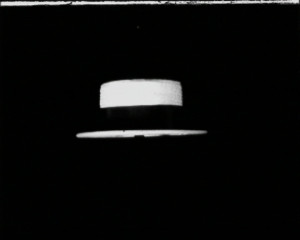
"Two theatrical agents, clearly averse to work, take pleasure in ridiculing the various performers who come to show their talents. The comedy turns slapstick as the agents unceremoniously dismiss the artistes, and even more so when the artistes subsequently take their violent revenge on the agents. The cine club shows its versatility by experimenting with a few camera tricks: at the beginning, with a spinning straw boater against a black background and later, during the sequences featuring 'Ricardo' the conjurer" (EAFA Database).
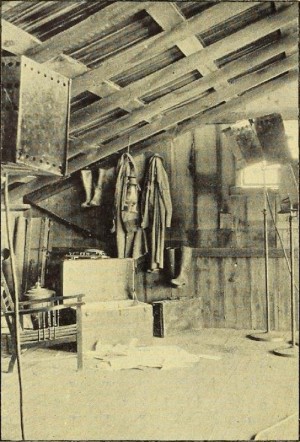
"Galleon Gold, 1600 ft., 16 mm., produced by the San Jose Players under the leadership of John C. Waterhouse, strikes a more sober note. This entertaining drama of the youth of a venerable Spanish family, who discover the treasure trove of the Conquistadores in time to save the family hacienda from the encroachment of the lime quarries, contains much good photography, a smooth continuity, experienced acting and first rate direction." Movie Makers, Sept. 1930, 569.
"Galleon Gold, 1600 ft., 16mm., produced by the San Jose Players, deserves special mention for its smooth flowing continuity alone. Although the difficulty of securing a lucid continuity is greatly increased in a longer dramatic picture, the producers of this film have achieved perfect clarity. This film was made during a summer vacation at a mountain ranch and it seemed at first that the lack of electric current for lighting would be an insuperable obstacle since the script called for many interior scenes. The problem was finally solved by a portable motor generator driven by a gas engine which, with proper lighting equipment, made ample illumination possible." Movie Makers, Dec. 1930, 788.
"Harrison and Harrison's offer of the firm's color meter in leather case, with six 1 1/4 -inch meter-matched filters in leather filter fold, was awarded Eugene L. Ritzmann of Berkeley, Cal., for his 'Garden Life.' The entrant has been making amateur movies for nine years, and his skilled work in putting on the screen in color by means of controlled timing the blooming of flowers demonstrated that his period of apprenticeship has long since expired. If a word of suggestion and distinctly not of criticism might be offered it would be the film would have greater value for the uninformed if titles should be inserted identifying the various flowers. The subject caused some tough eggs of the male persuasion to sit up and take notice. What it will do to the world of womankind it is not hard to imagine." American Cinematographer, Jan. 1938, 28.
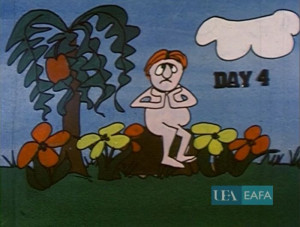
Cartoon set in the Garden of Eden. Adam is soon bored in his new surroundings, so God creates Eve for him. Over the next three days God finds Adam regularly bored, so God suggests activities for Adam with Eve, explaining each time what he means. The suggestions for days 2, 3 and 4 respectively are: giving Eve a hug; kissing Eve; making love to Eve. On the fourth day, Adam returns and asks God to explain what a headache is. (EAFA)
"Ghost Town" was highly appreciated by those directors and cameramen sitting on the judging board who had once worked in New Jersey. This picture shows all of the deserted movie studios in New Jersey." American Cinematographer, Feb. 1936, 73.
"Glimpses of Rural Hungary was the first film ever made by Elizabeth Rearick but its excellence must be credited to more than beginner's luck. It represents a willingness to follow instructions carefully and an ability to compose scenes as they are selected. The picture contains a charming record of the people and customs of Hungary, but capturing this was secondary, for Miss Rearick planned the film to be principally a record of folk dances. Most unusually accurate exposure and focusing make the film outstanding in its technical aspects. Clear, crisp, steady pictures inevitably do a great deal to present a subject in a delightful way. One of the remarkable features of the film was the rock steadiness of the camera, although Miss Rearick did not use a tripod at any time. The sequencing is worked out well and, although the film is intended for use in physical education work, it has a tremendous general interest value. The entire finished product is one of which an experienced filmer might well be proud." Movie Makers, Dec. 1933, 500.
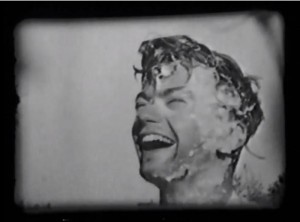
"Members of the National Film Society of Canada (Vancouver Branch) parody the early experimental works of American avant-garde filmmaker Maya Deren [to whom the film is dedicated]." (BC Archives)
The film is subtitled: "A conflict between two philosophies of time and space."
The film was shot in an area of sand dunes on Sea Island in Richmond, BC, near the location of Vancouver International Airport.
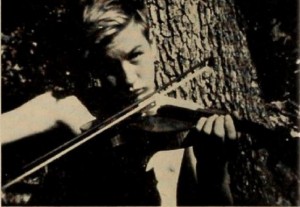
"The familiar plight of a boy who disappears just before his music lesson is the simple springboard launching The Great Man Hunt. The subsequent adventures of the older brother and a reluctant pal who search for the errant youngster build into a chase sequence (on the teen age level) that is soundly representative of basic movie techniques. In developing this theme, Donald Volkman set himself many a difficult exposure problem — notably in shots of the boys aboard a trolley car and in wooded areas with sunlight slanting through tall trees. His solution of these problems is satisfying in every case. Further, Mr. Volkman's cross cutting in the chase sequences indicates intelligent study of professional masters of this technique. A swift climax is presented amusingly as the music teacher apprehends the boy who, wearing only a pair of swimming trunks, tucks a violin under his chin and proceeds to play his lesson at the edge of a lake." Movie Makers, Dec. 1949, 455.
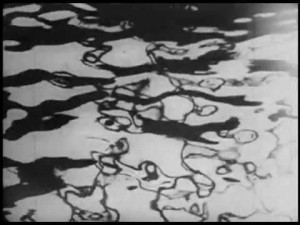
"This film is a study of water in the new manner: A series of photographic shots of the reflections of boats, ferry houses, docks, etc., on water and the whole resulting in a chain of pure abstract patterns of shapes in water. Steiner achieves an astonishing tempo as his film advances. The picture is bound to attract wide attention and a great deal of discussion wherever is shown." Photoplay, Nov. 1929, 67
"Hearts Of The Golden West, 1200 ft., 16mm., filmed and directed by Theodore Huff and enacted entirely by youngsters under thirteen, is a delightful and whimsical burlesque of the Griffith melodrama of the days when titles were long and plots of villainy and intrigue laid in the great open places swept grandly to a moral conclusion in which "true hearts were united." In those days, producers did not hesitate to use a cyclorama or to place painted canvas scenery on an outdoor location. Mr. Huff revives all of the old technique, even to the dance hall set, with its inevitable balcony, and the fight to the finish at the edge of the cliff. Under his direction, the children act their parts with complete seriousness and, in some cases, with mimetic ability that would have given their prototypes pause." Movie Makers, Dec. 1931, 658.
Total Pages: 14